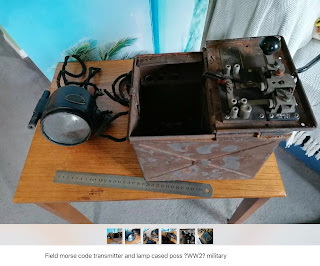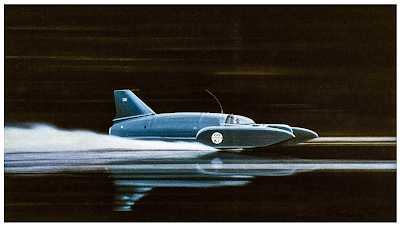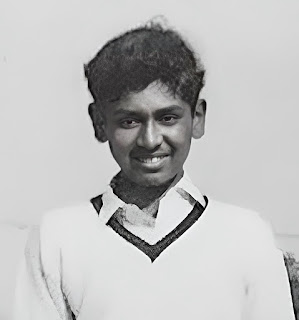CHARNEY HALL Pastimes and Chattels
Friends at state schools couldn’t understand why I had so many more days holiday than they did. Neither did I. But what I did believe was that I deserved them. Why? Because I needed the emotional break and the space away from school! No doubt the masters and headmasters, if pressed, would have agreed too…however with friends back at local schools and days to spare, generous school holidays could lose their appeal.
Conversely in the Charney term there didn’t seem to be much spare time. Everything took place in strict accordance with the school curriculum but somehow we managed to have some opportunities for recreation. Perhaps there were specific times of the day set aside, but I can’t remember? Of necessity, pastimes, if ‘hardware’ was involved, had to be space efficient. I don’t recall having a locker or safe place to store personal possessions except under the lovingly carved sloping desk top in the classroom. Hence favourite games were for example pocket chess and Owzthat.
In the 1950s, being so close to the end of WW2, some boys (the Hampson brothers?) acquired forces surplus equipment - fascinating short wave wireless sets extracted from Lancaster bombers (these were housed in massive, matt painted, tin boxes and broke the above rule - where did they keep them?). They also had signalling equipment and intricate compasses which we imagined had been used on dawn raids into enemy territory.
There was also a large cylindrical spotlight in the kit, about 6” in both diameter and length, which had a perfectly silvered concave mirror mounted behind the filament bulb. Originally used for signalling, we used it to project pencil thin beams of light high into the night sky and to pinpoint the chimney pots and stacks perched on the apex of the gable end of the school building.
Others, notably a bespectacled, budding ‘rock’ scientist called Haigh, constructed mystical crystal radios and listened to them with headphones. That a piece of rock could pick up radio waves, and with a few transistors soldered together, could produce music seemed like magic to us.
The world was so very different then. Elementary mass production techniques developed prior to and during WW2, which were developed out of necessity, and their benefit in both lower cost and consistent, higher quality, were adopted in industries which burgeoned after the cessation of hostilities. Utility furniture (cool now) and pressed metal ‘fitted’ kitchens (old hat now) were available to those who wanted a new start in life or had lost all their possessions in the bombings.
The building industry was gearing up to a post war building boom which would last until the early 1970s. Le Corbusier, a French engineer/architect and visionary, had promoted the benefits of high rise living in his cityscape sketches and the British bureaucrats skewed the public housing cost yardstick (a means of assessing the viability and cost of schemes) to encourage, would you believe, the construction of high-rise ‘tower blocks’.
In the 1950s speed was king and was given due media exposure. Donald Campbell, a schoolboy hero, had begun speed trials on Lake Ullswater with his jet engined boat, Bluebird K7 which was launched in 1955. After setting 7 world water speed records between 1955 and 1964 another attempt at the world water speed record was rumoured and due to take place this time in England on Lake Coniston, the final lake of choice and ultimately forever linked to his unfortunate demise on 4th January 1967.
In 1964 Donald Campbell became the first and only person to set both world land and water speed records in one year.
The Hawker Hunter jet fighter, later the spectacular English Electric Lightning (once airborne it could take off vertically like a rocket), were our favourite ‘planes. The De Havilland Vampire/Venom was configured in a different way with a ‘twin-boom’ tail. All confirmed to us that Britain was at the forefront of technology and did indeed rule the waves and command the skies. However 4 engined turbo-propped Vickers Viscounts were still used on scheduled British European Airways passenger flights.
The British built Jaguar sports car, first the XK120, then the XK140, later the XK150, was recognised as one of the fastest on the unrestricted roads of the time. Michael Coxey’s father had a bright red one - we were very envious!
Britain’s first motorway, the first section of the M6, a new 2 lane bypass around Preston, including a large span bridge over the River Ribble, was under construction and due for completion in 1958. Plans for the upgrading of many sections of the major road network in the country were also underway.
Middle class families bought their first black and white tv, complete with an 12” screen and french polished, hardwood veneered, floor standing case which looked more like a drinks cabinet than a technological revolution. The pressure was on as it had to be installed, complete with alien ‘H’ shaped aerial strapped to the chimney stack for all to see, and all valves working (little did we know how troublesome these would become), to enable us to watch the coronation of Queen Elizabeth II on 2nd June 1953. One of the first outbreaks of a social comparison virus (keeping up with the Joneses) that swept through the country….
So while life at Charney Hall seemed to progress with imperceptible change, perhaps reflecting the conservative tradition of the examination boards and the absence of teacher training, in the greater world outside things were developing at a pace.
Enforced conformity of life in a private boarding school gave enhanced, perceived value to personal possessions. They were the only links to home and family life and one of the few opportunities for personal expression.
Watches, fountain pens and propelling pencils were treasured items. The switch from scratchy utility issue school pens with brittle steel nibs in old Mr Hopkin’s class to a beautiful Waterman or Parker fountain pen with a 14 carat solid gold nib was a small but important milestone in a schoolboy’s life in term time. Henceforth writing letters home after Sunday lunch became a pleasure! The only decision then was which colour of Parker Quink ink would best reflect one’s personality!!
The weekly letters home anticipated, even demanded a reply, usually from mothers as fathers, we understood, were always preoccupied with business. The Eagle comic, forwarded by parents, appeared with regularity each week providing a glimpse into an extraordinary fictional future. In hindsight maybe more prophetic than we could have possibly imagined!
In comparison the school standard issue geometry set looked positively archaic. Crudely made and undeniably mass produced, but not in China, we wondered whether it would last the time at Charney.
The practice of calligraphy forced on us in the first form (I mean here the ability to write in copperplate or italic script) was an exercise in manual dexterity and eye co-ordination but was a doomed asset. Kick-started in prep school and often further refined at public school, some pupils attaining almost monastical standard, it was rubbished by the use of biros and in the scramble for knowledge during Life’s ‘Further Education’ whether that was to be university, teacher training college, the family business or just plain work…
https://en.wikipedia.org/wiki/Crystal_radio
https://en.m.wikipedia.org/wiki/Donald_Campbell
https://automobile.fandom.com/wiki/Jaguar_XK120
https://en.wikipedia.org/wiki/Preston_By-pass
https://en.m.wikipedia.org/wiki/Bluebird_K7
More memories:



























Comments
*A couple of Matchbox and Hot Wheels cars
*Plastic toy soldiers
*Balsawood glider
*Ellisdon's catalogue
*Comics which I would receive periodically
*A few paperbacks (Famous Five, Biggles, etc)
*Tennis balls, even though I didn't play tennis
*Roller skates
*And for a couple of weeks before the teachers discovered it, a water pistol which eventually got confiscated
And tennis balls, most boys had at least one, often well worn, maybe used for French cricket(?),fielding practice and generally just messing about!
I was lucky enough to have with me a collection of Beatles LPs that were played in the classroom and I also remember having singles like Pinball Wizard/The Who and Fleetwood Mac/Albatross. I remember by pure luck turning the radio, sorry, wireless, on any tuning to a station to find they were playing the whole of the Beatles album after Sgt Pepper 'The Beatles' or know more commonly as The White Album.
There was a television that I remember we all watched Winston Churchill's funeral on in the Hall but that may have been Duncan's telly brought in specially. I do remember watching the landing on the moon in Mr Fawcett's room. And there were the films shown by Mr Cockshot (or Cockshoot) in the hall and being able to get a cuddle/hold hands with the Matron, Mair Hughes.
Reading the 1950 Notes talks about Mr Fawcett joining the staff and how he looks after the boys pocket money and we lined up on a Friday to tell him what we wanted him to buy down town and hoped that what he came back with somehow resembled what you had asked for!